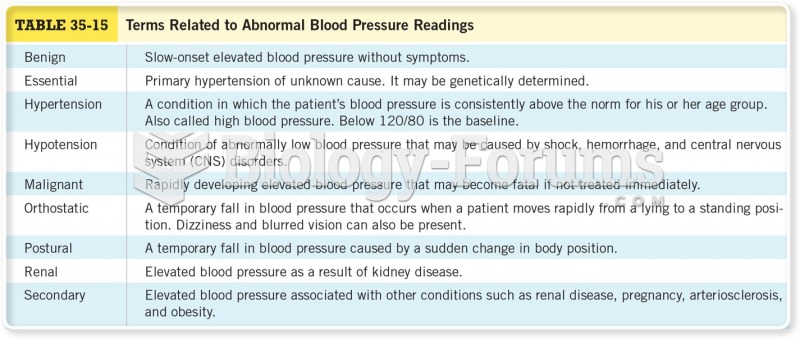|
|
|
Bacteria have flourished on the earth for over three billion years. They were the first life forms on the planet.
Aspirin is the most widely used drug in the world. It has even been recognized as such by the Guinness Book of World Records.
Inotropic therapy does not have a role in the treatment of most heart failure patients. These drugs can make patients feel and function better but usually do not lengthen the predicted length of their lives.
There are more bacteria in your mouth than there are people in the world.
Acute bronchitis is an inflammation of the breathing tubes (bronchi), which causes increased mucus production and other changes. It is usually caused by bacteria or viruses, can be serious in people who have pulmonary or cardiac diseases, and can lead to pneumonia.







